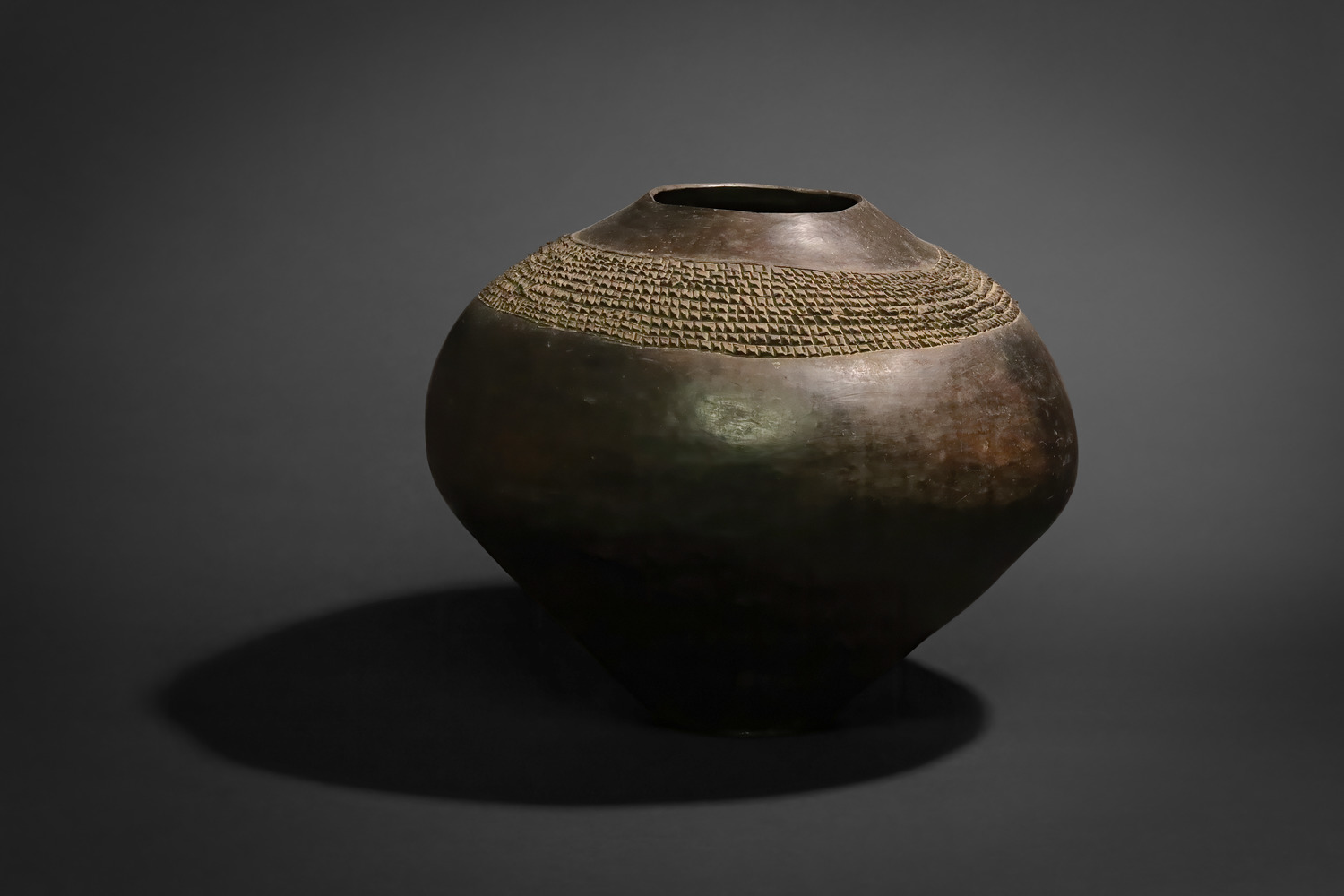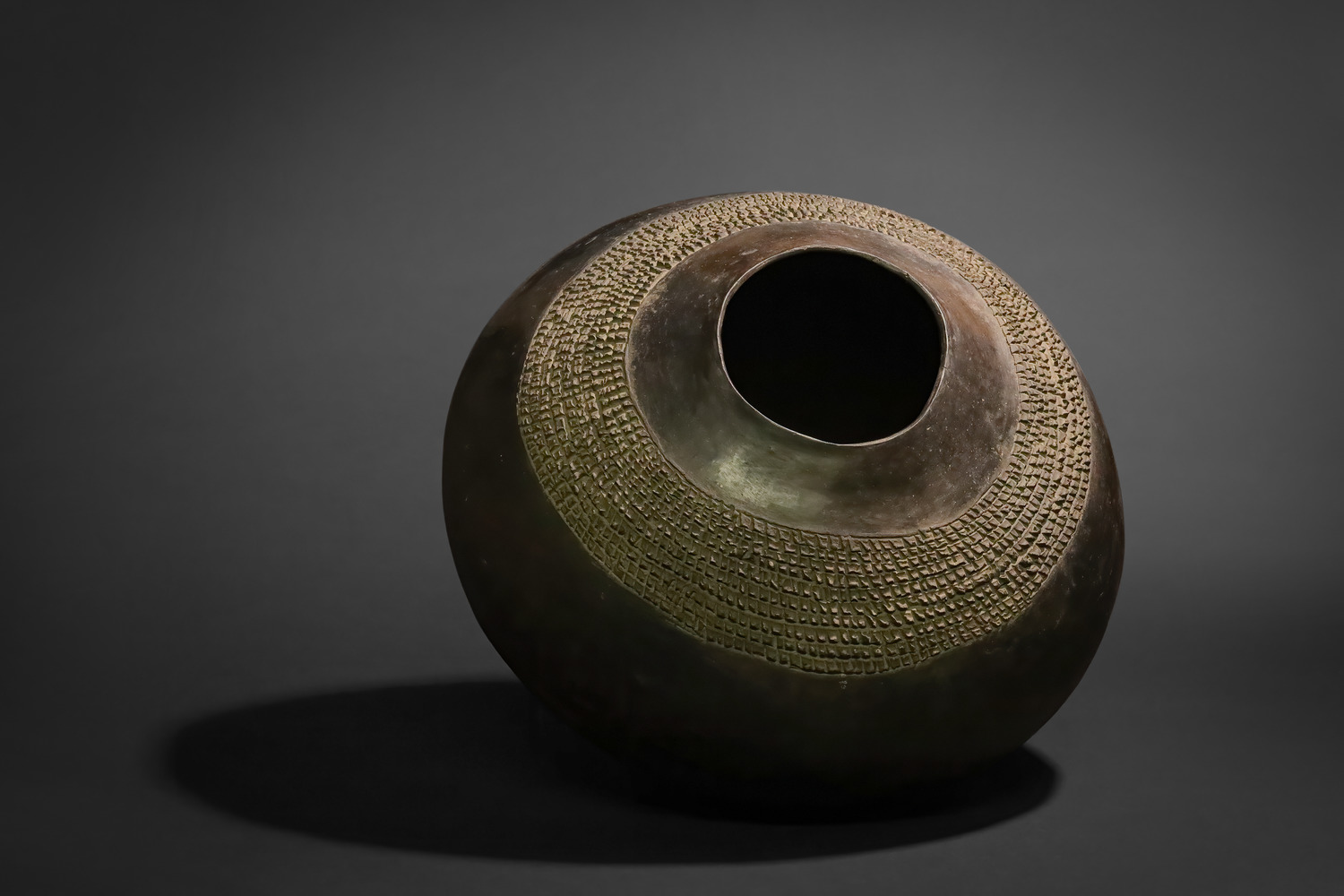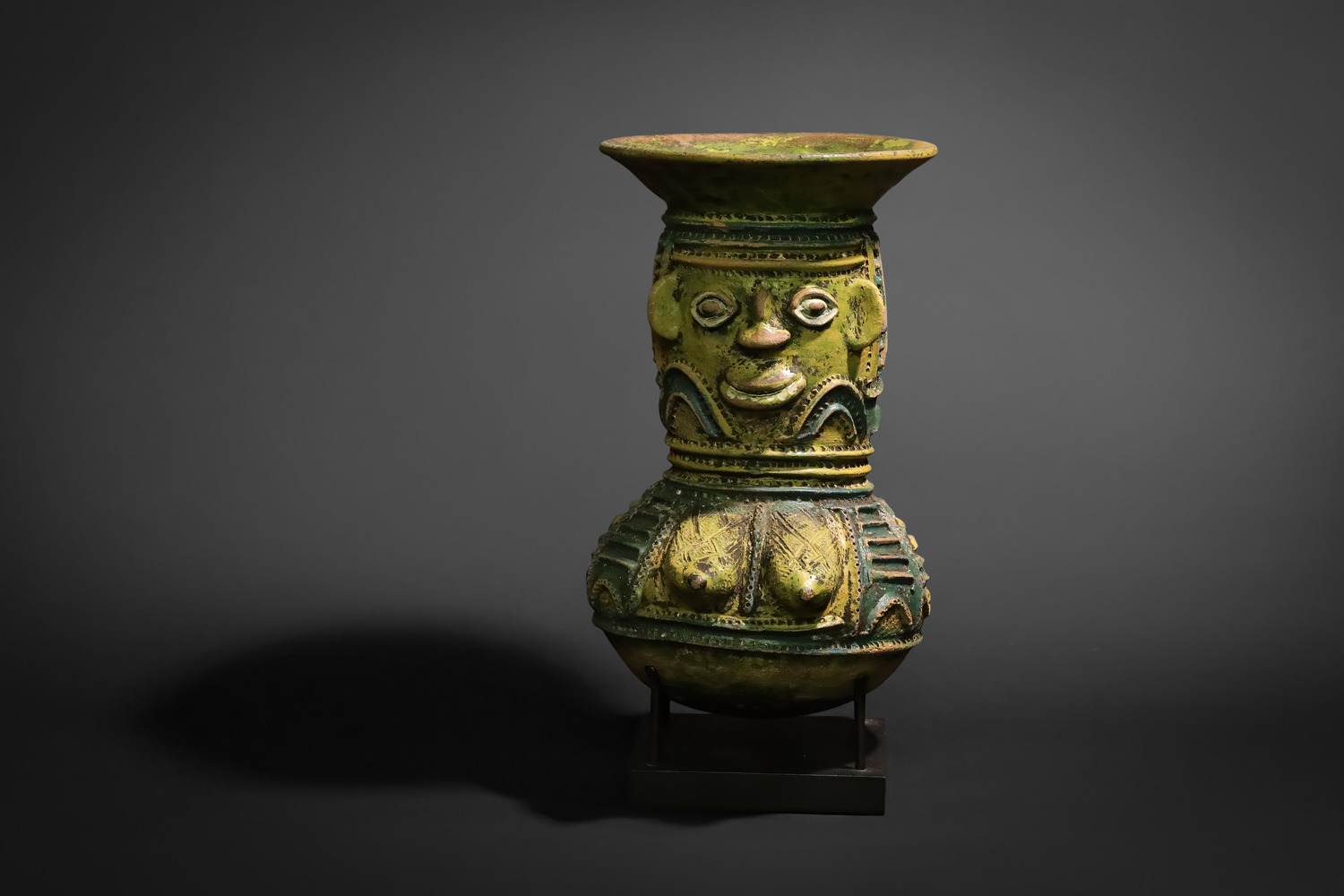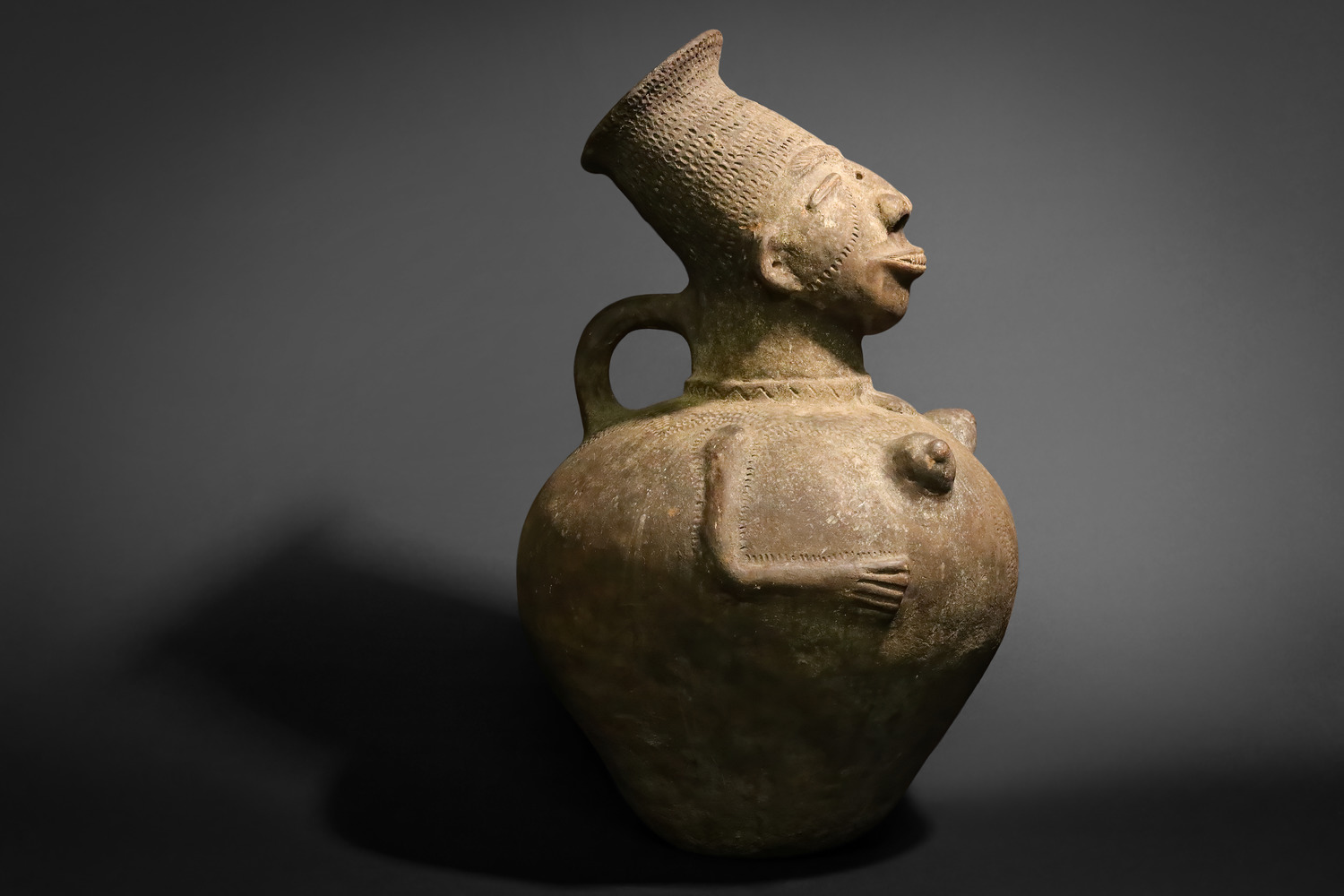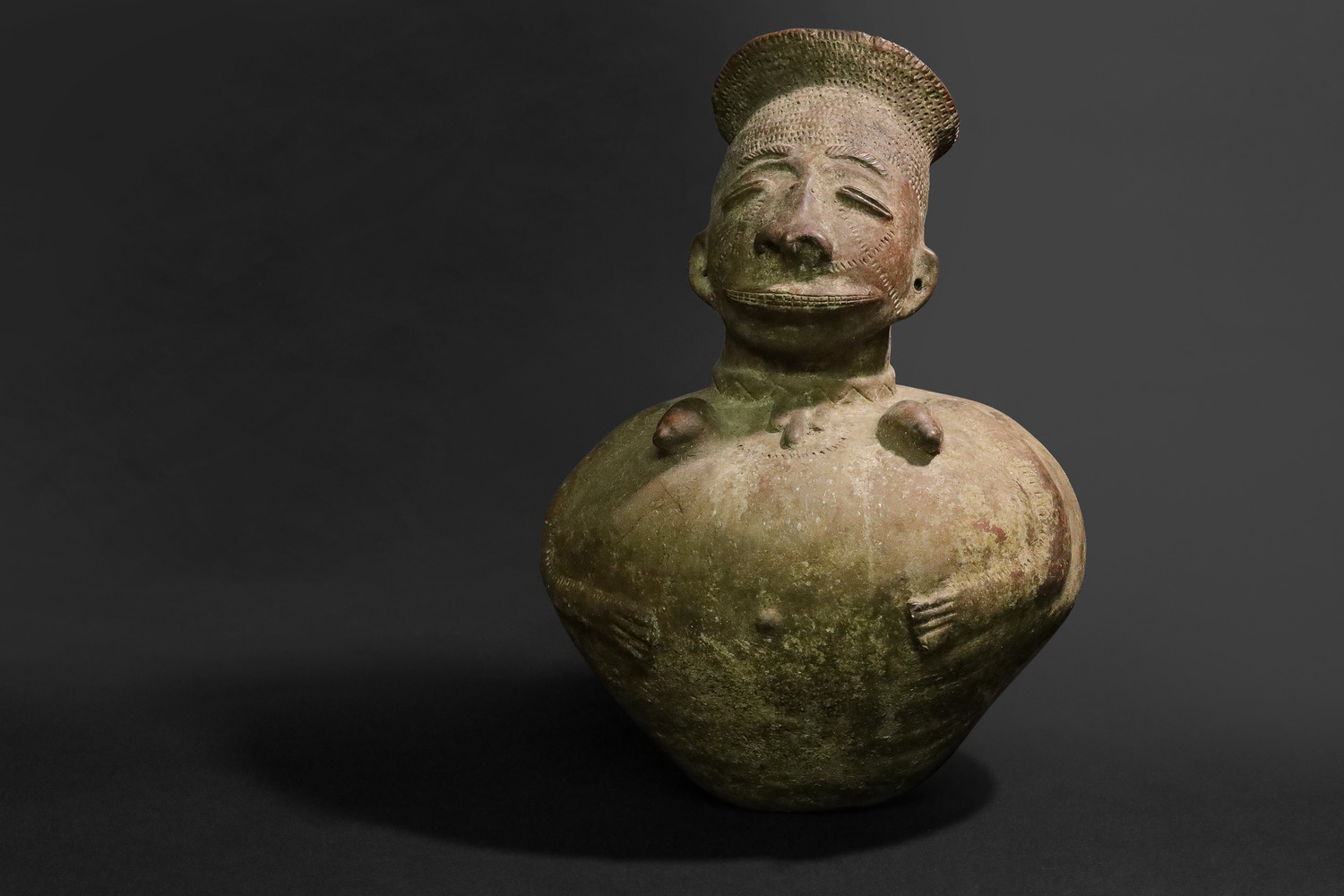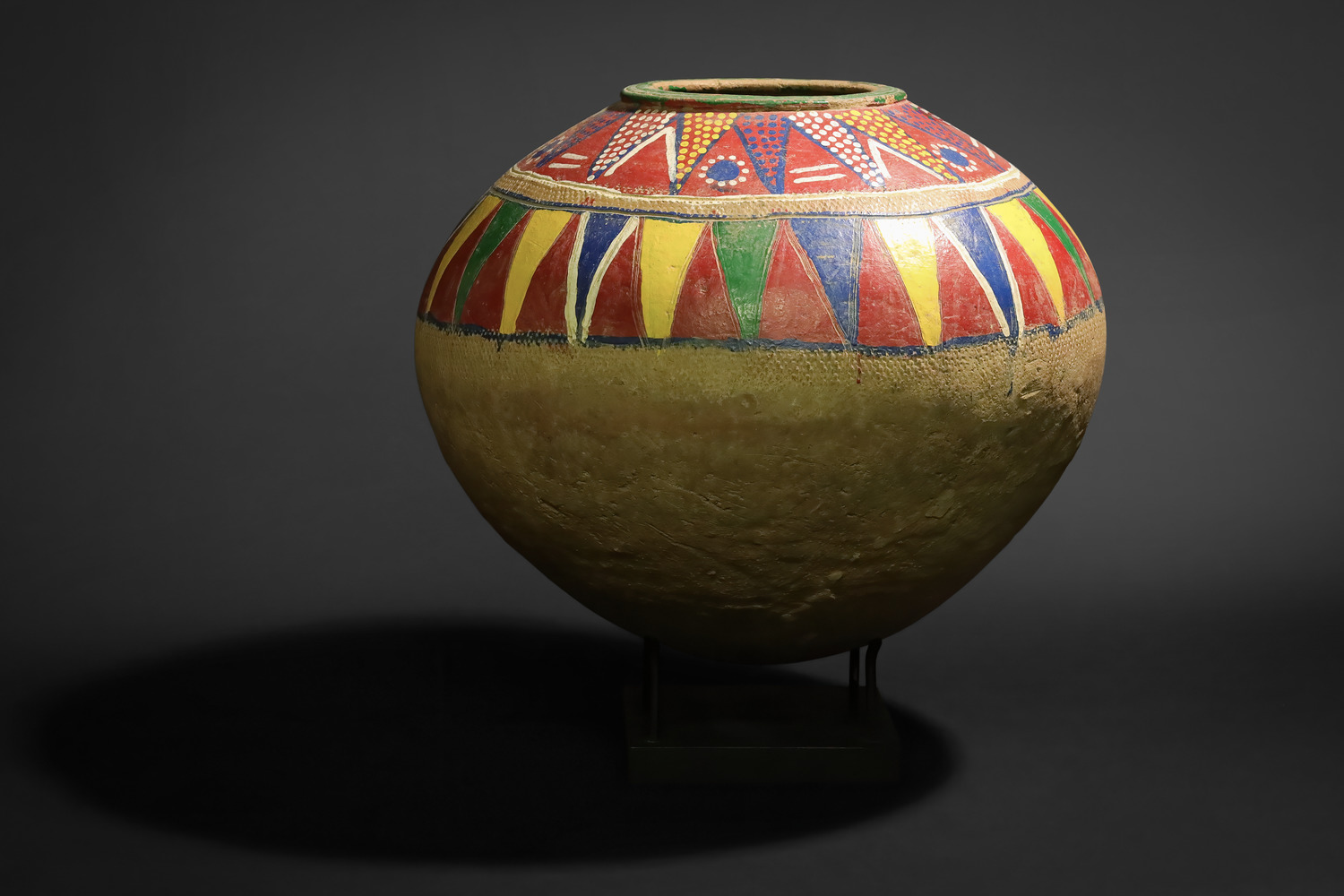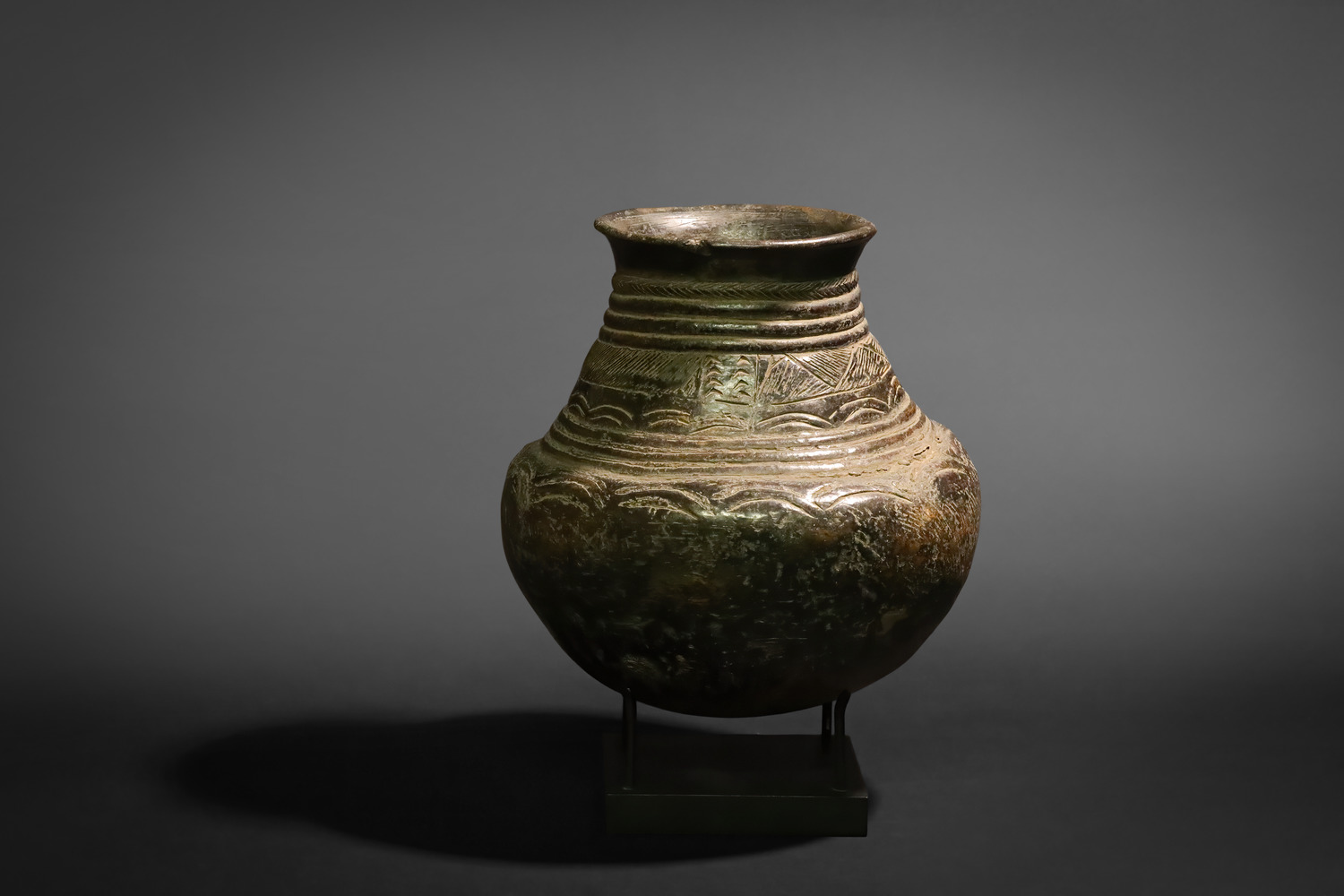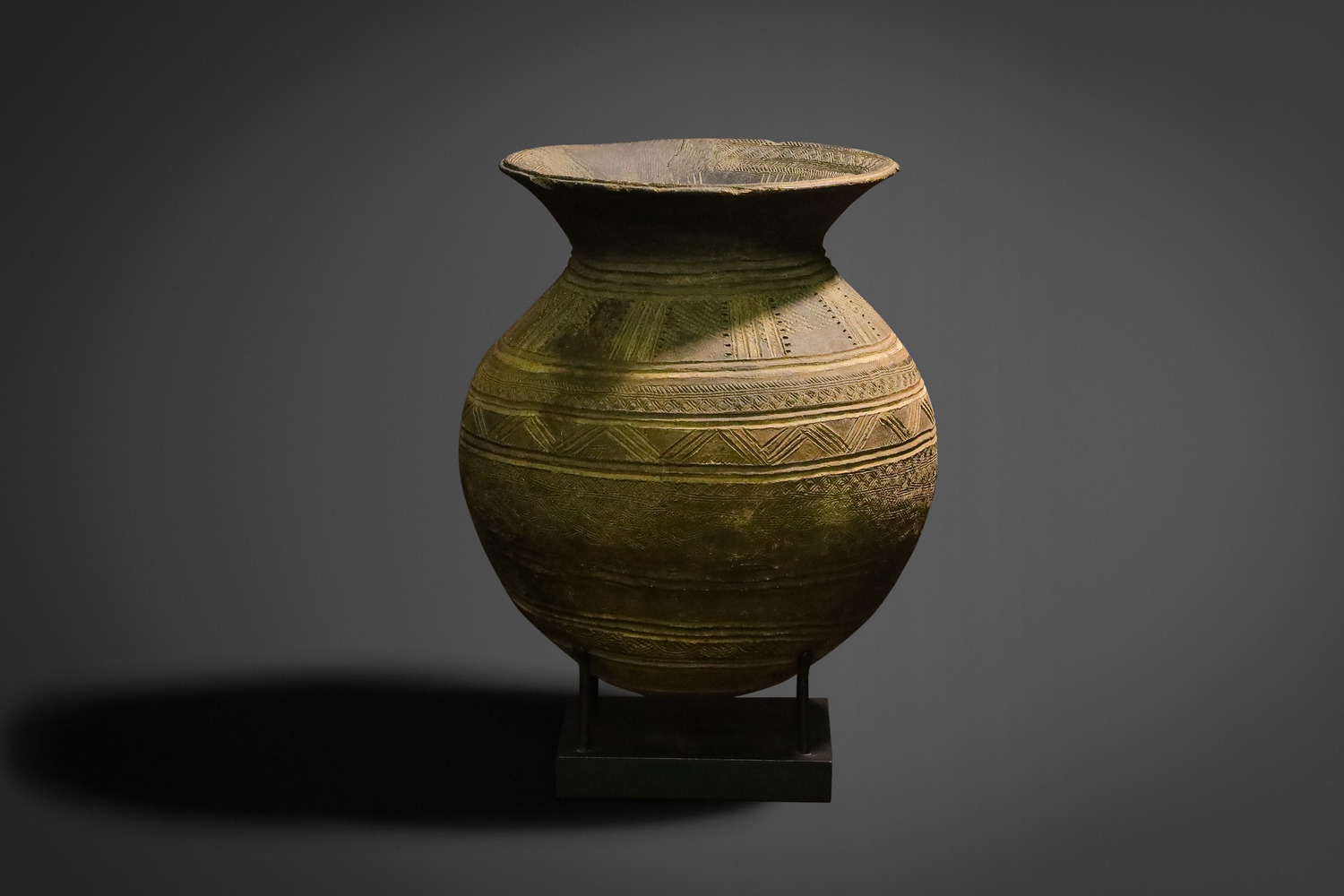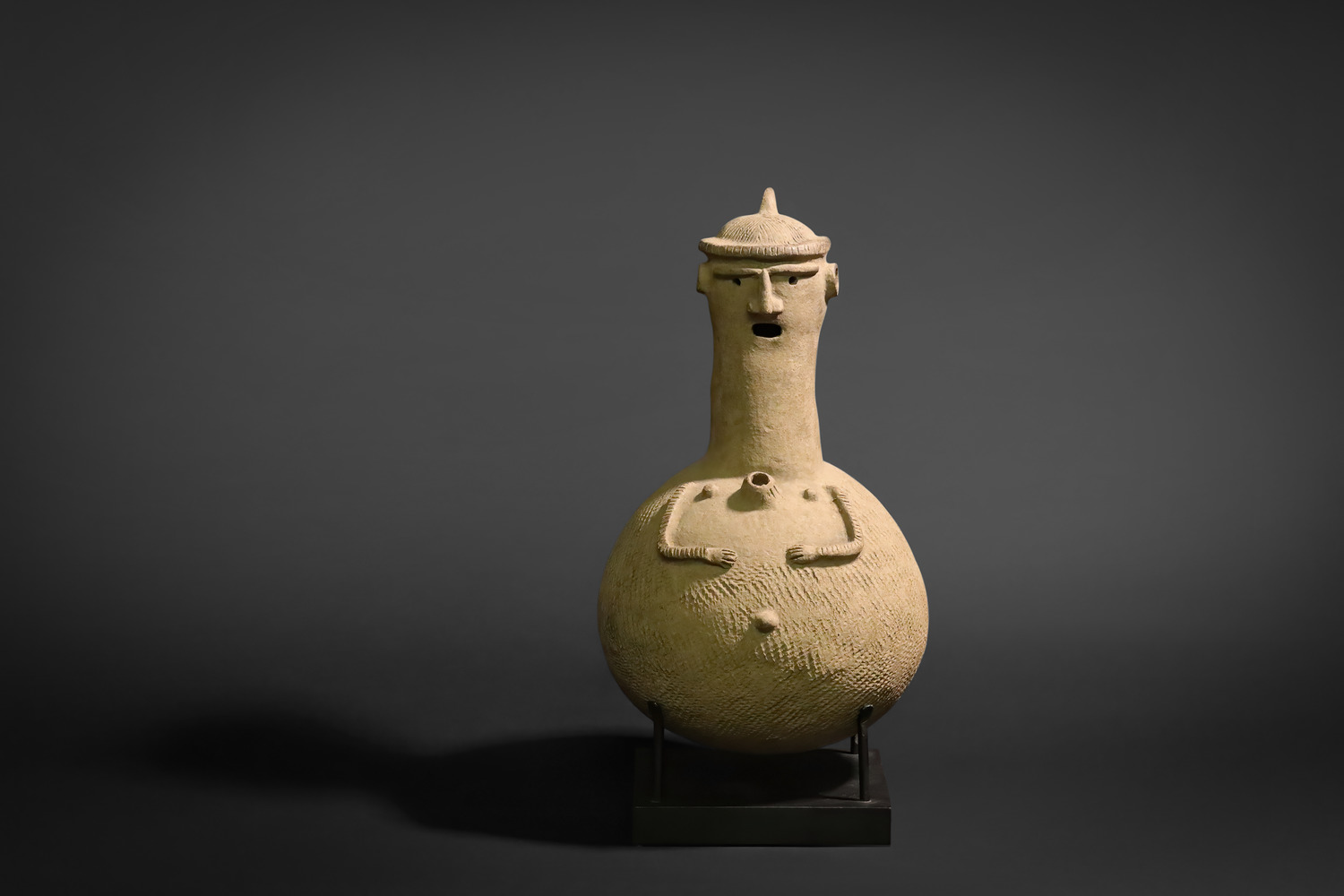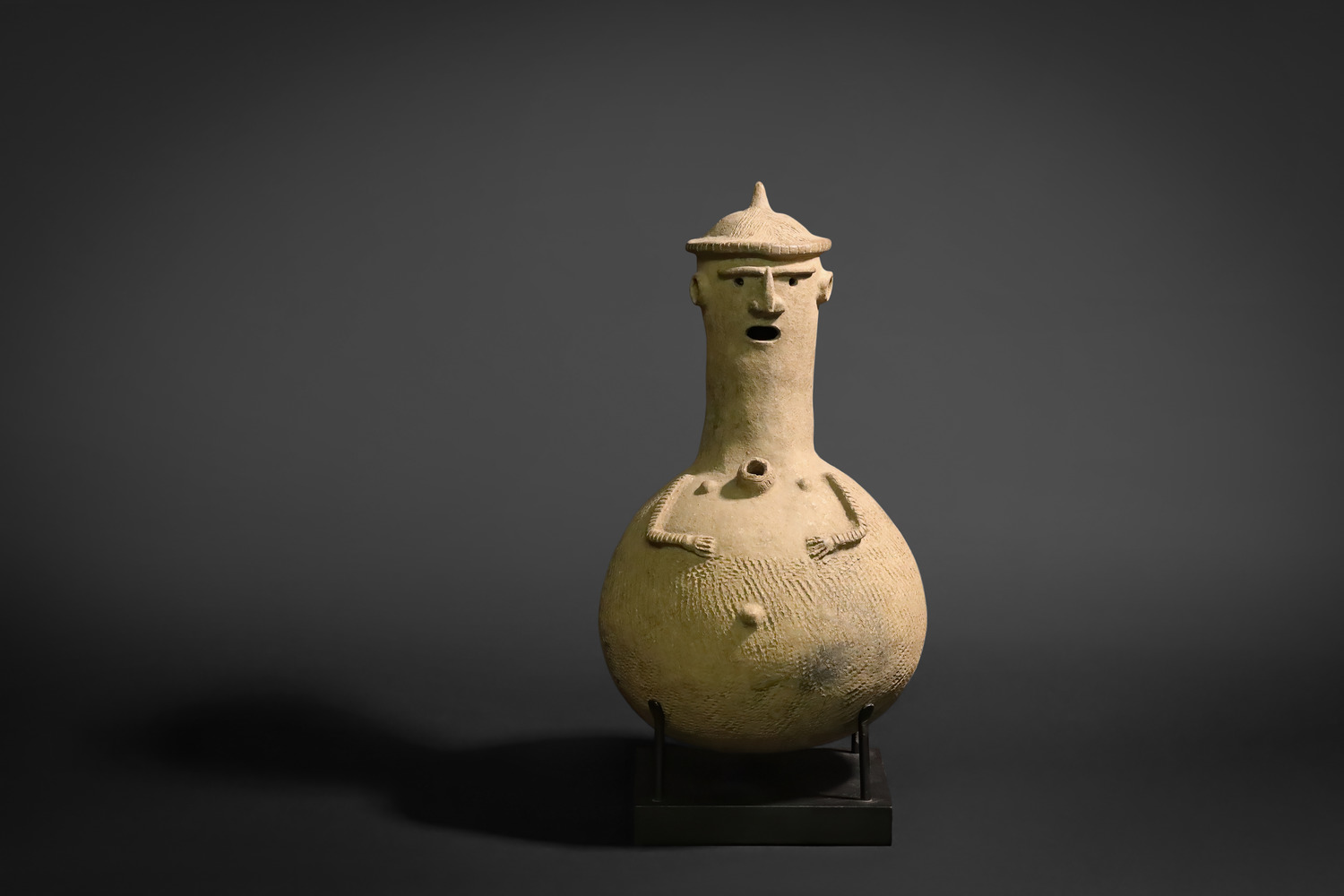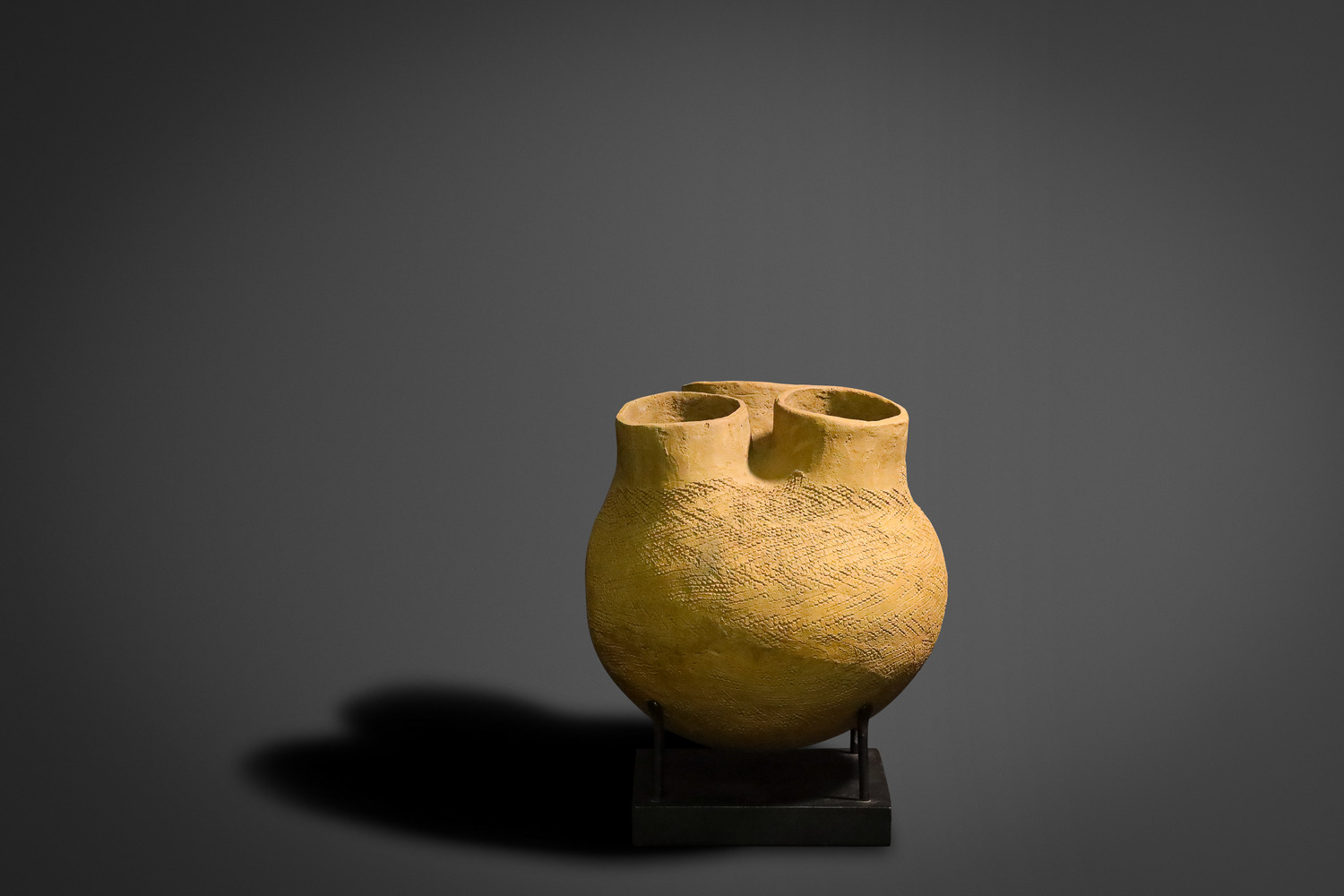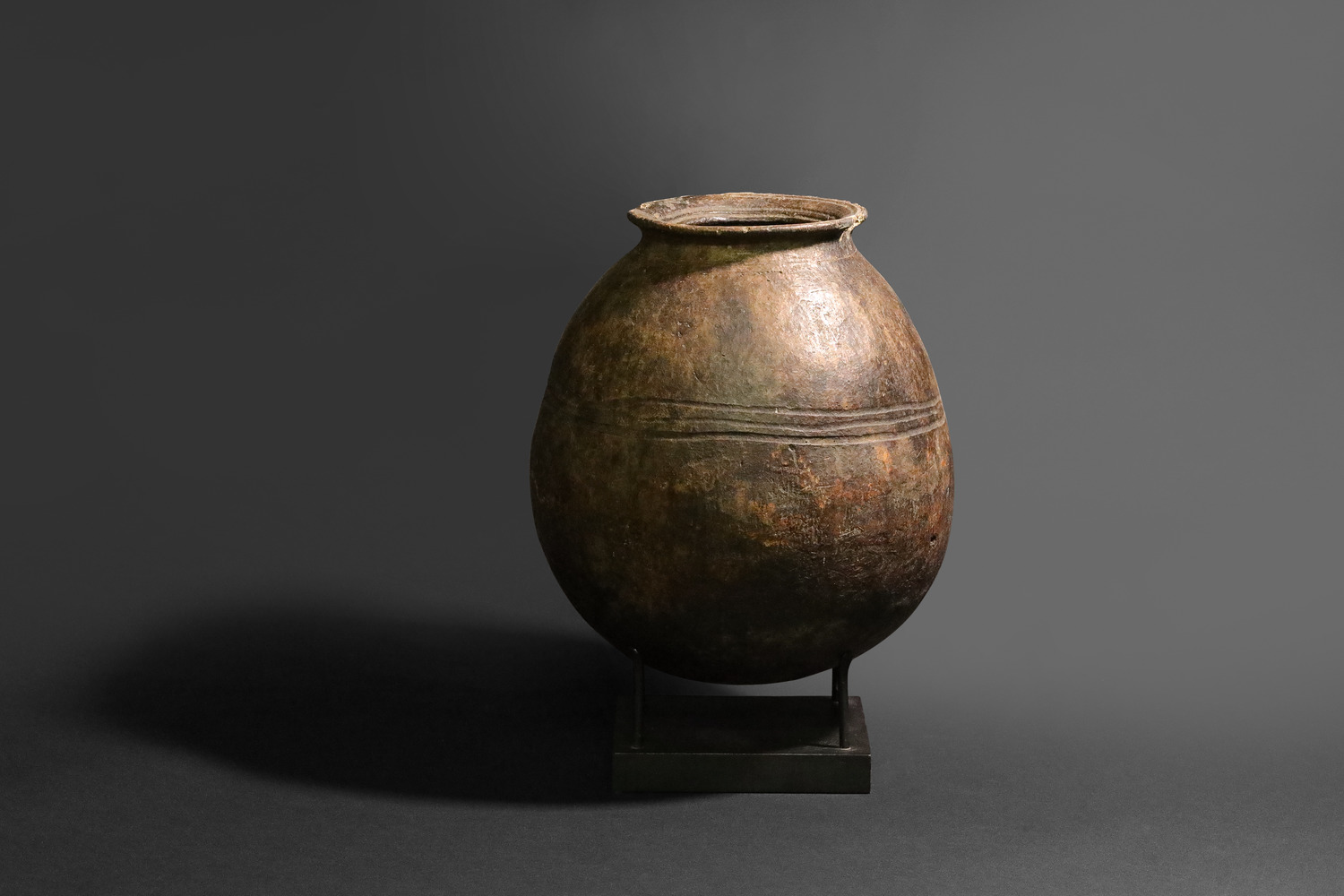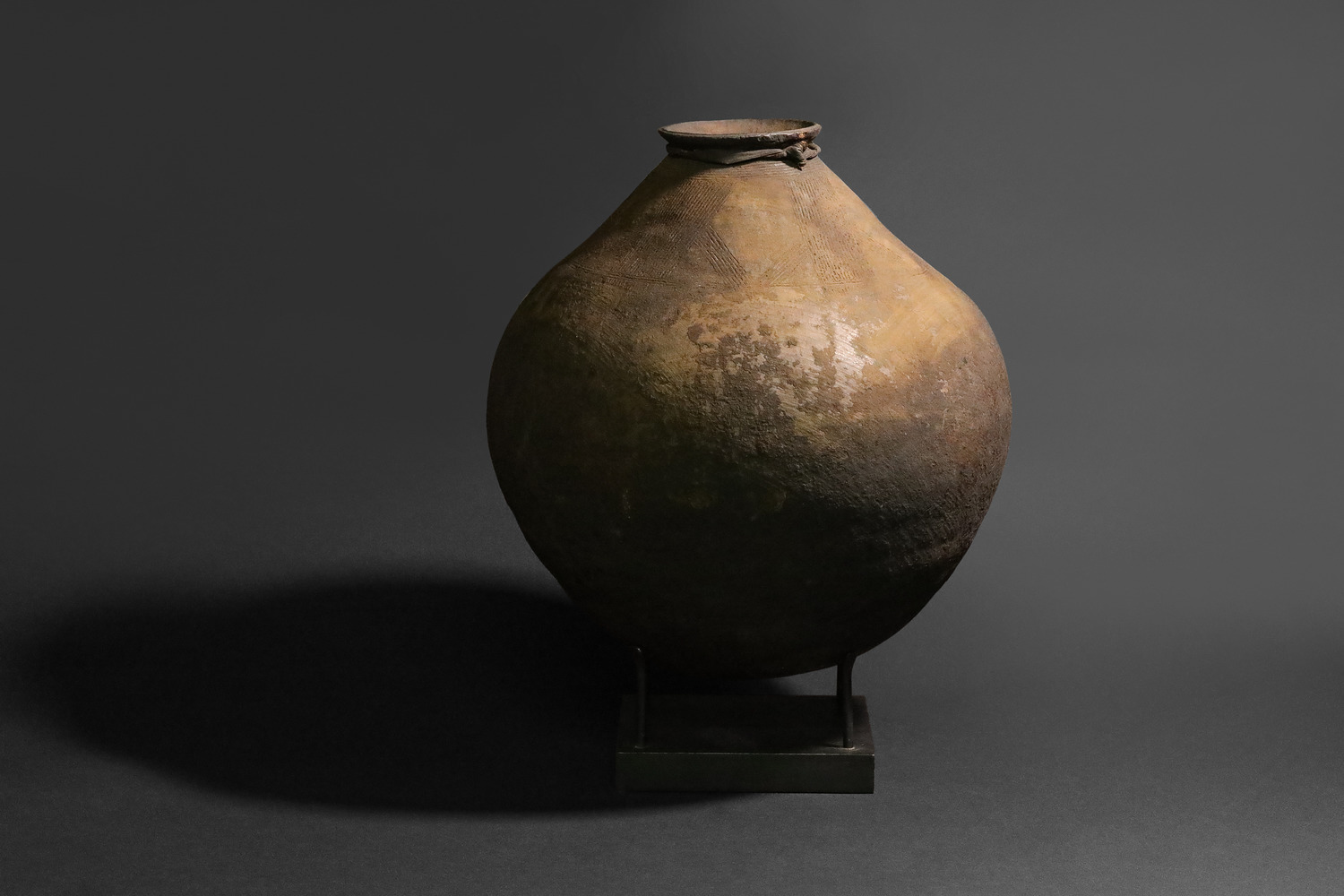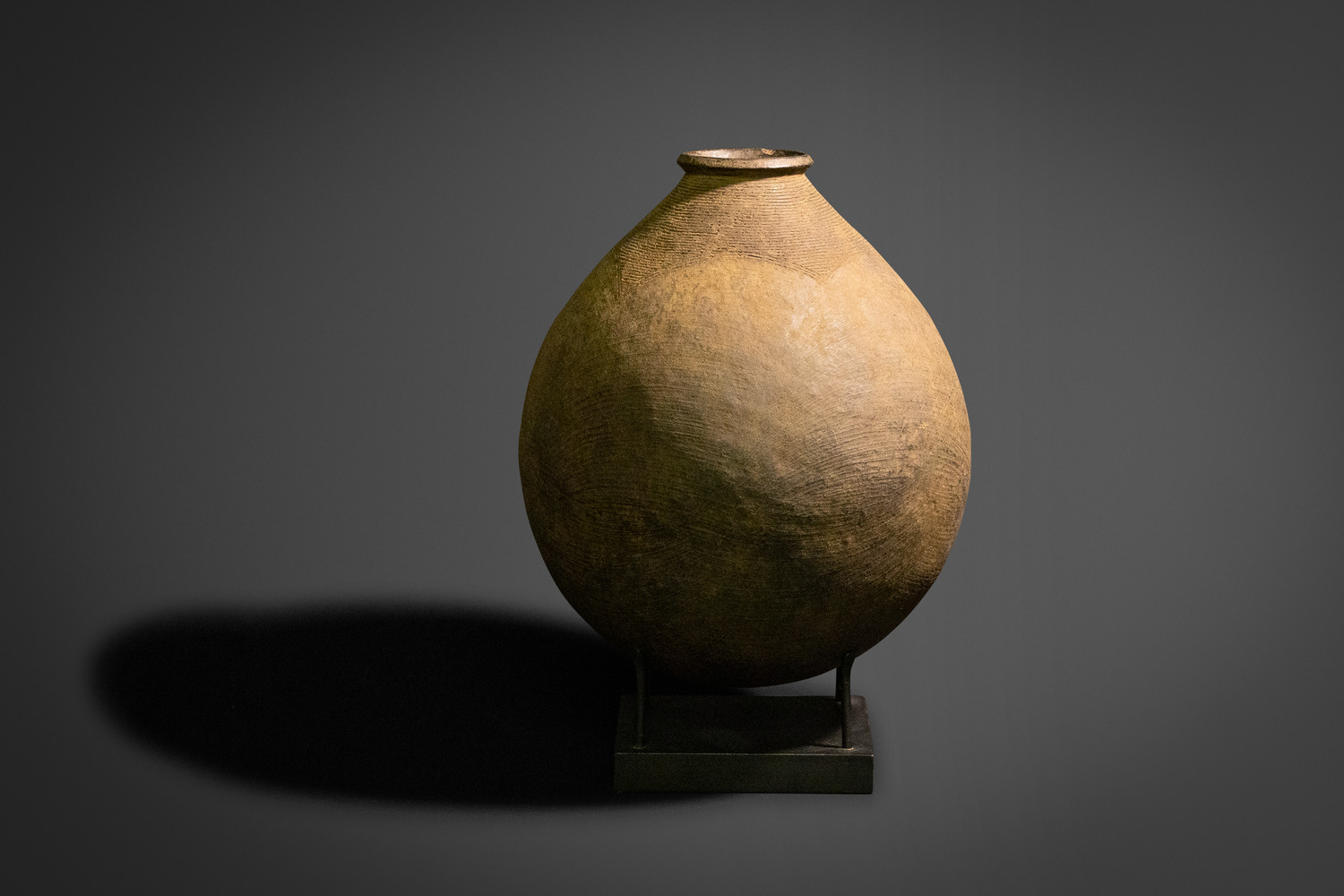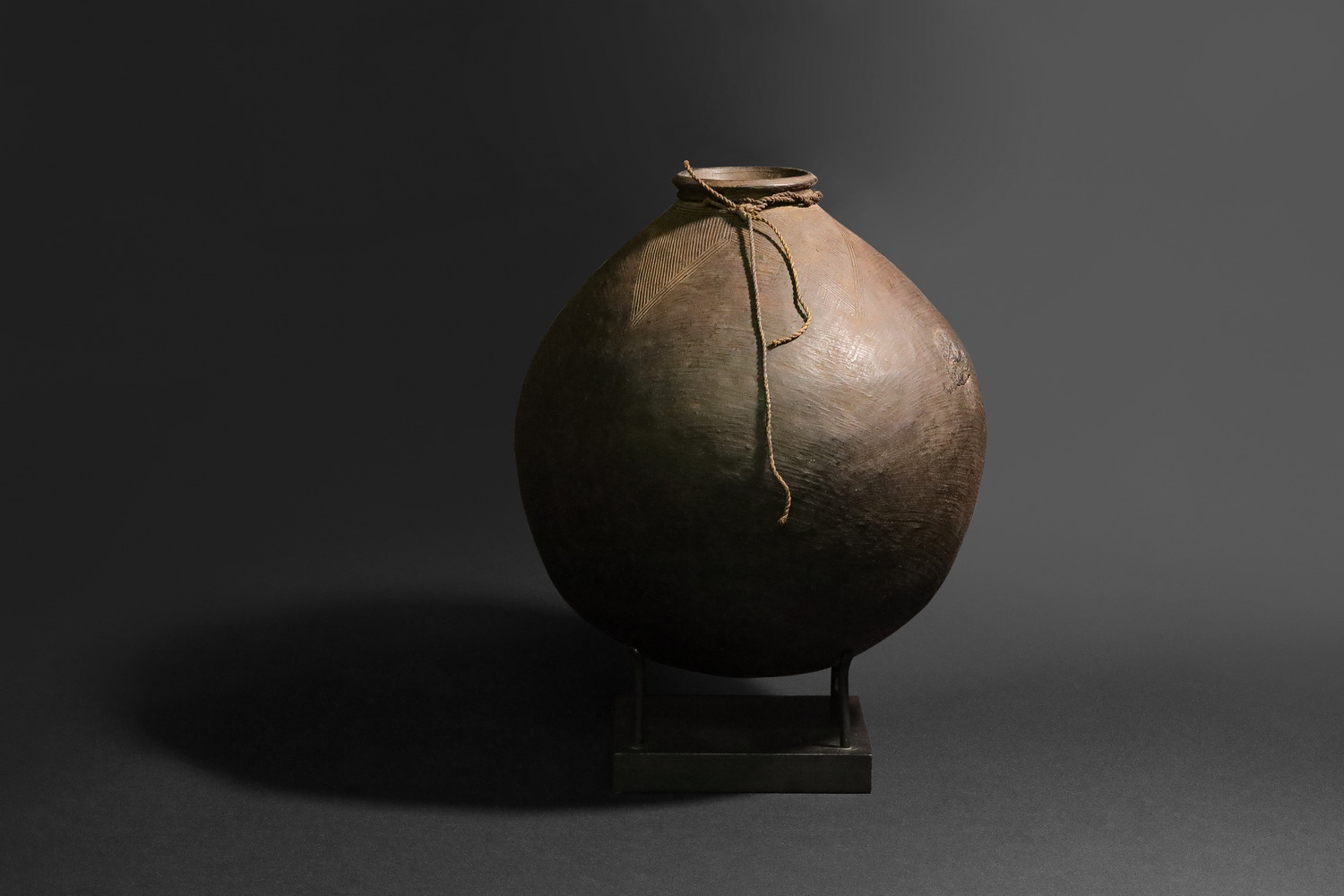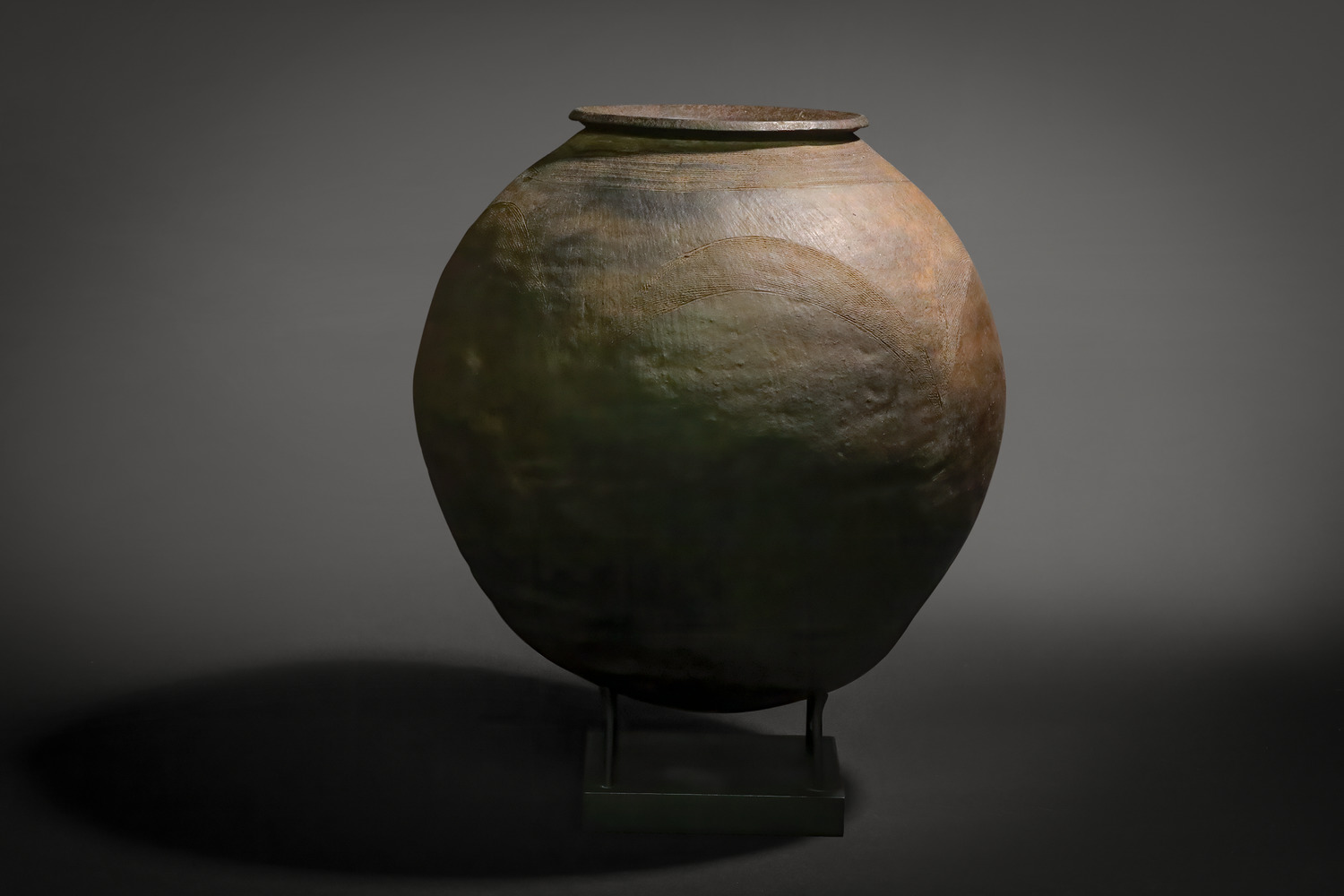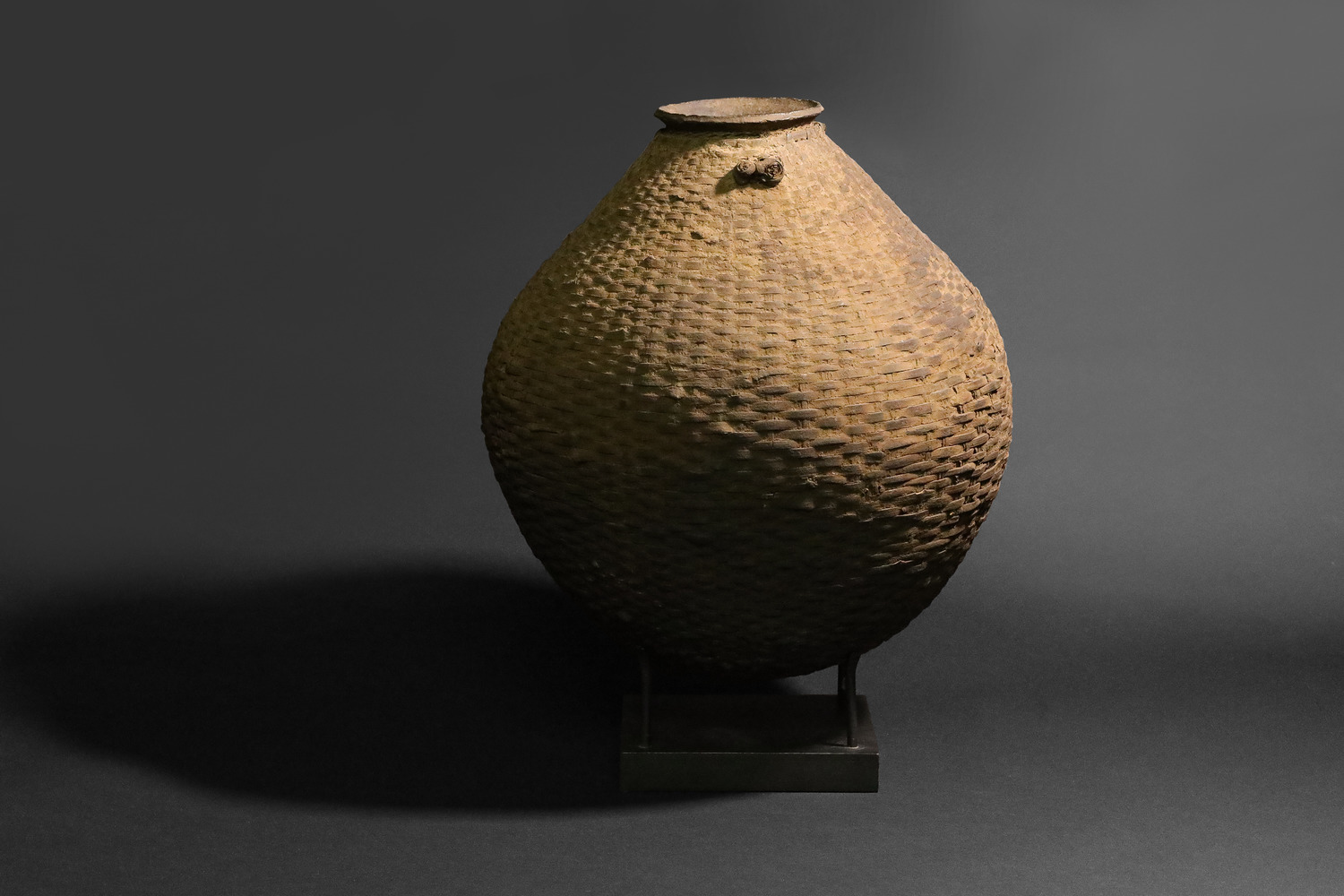Description
This majestic Zulu ukhamba, measuring 15 inches in height and 18.5 inches in diameter, emerges from the collection of Bill Simons, an influential connoisseur of Southern African ceramics. Collected in the mid 20th century, the vessel exemplifies the sculptural mastery and ceremonial gravitas associated with Zulu beer pots.
Hand-coiled without the aid of a wheel, this vessel’s commanding presence is heightened by its rounded, globular form and gently flaring neck—both hallmarks of ukhamba forms used in ceremonial beer drinking and ancestral libations. The vessel’s surface reveals residual traces of fermented sorghum beer (utshwala besintu), reinforcing its authenticity and original function in the ritual and communal life of Zulu homesteads.
What distinguishes this example is the elegant, wide collar of raised geometric grid motifs—commonly referred to as the “amasumpa” pattern. These meticulously applied bosses or raised squares were created using stamped tooling techniques while the clay was still leather-hard, resulting in a rhythmic, tactile surface that conveys both aesthetic balance and symbolic meaning.
In Zulu tradition, the raised grid may represent the rippling surface of beer during fermentation, agricultural abundance, or the mat patterns used during communal meals. The amasumpa motif, in particular, is often associated with seniority and prestige within the community, its intricate repetition echoing themes of continuity and kinship.
The vessel’s deep, lustrous patina—a result of low-fired reduction and years of ceremonial use—accentuates the contrast between smooth and textured surfaces, inviting both visual and tactile engagement. Its absence of decorative color or applied pigment underscores the Zulu ceramic philosophy: beauty is revealed through form, function, and texture, not embellishment.
This is not merely a vessel—it is a sculptural embodiment of Nguni cosmology, communal values, and feminine craftsmanship.


